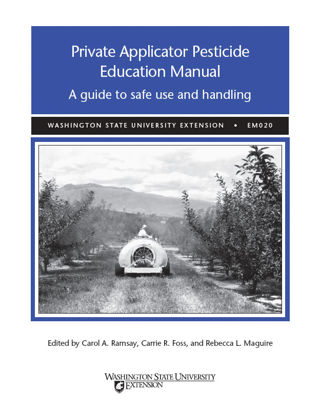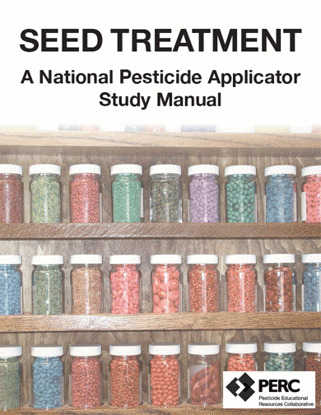You have no items in your shopping cart.
Black, Carol
Pesticides: Safe Handling
Think of safety first when handling chemicals around the house. When dealing with liquid soaps, furniture polish, bleach, antifreeze, or chemical pesticides, treat all as hazardous. This guide offers ...
$0.00
Private Applicator Pesticide Education Manual
Covers federal and Washington State pesticide laws, pesticide formulations, label information, pesticide hazards and health concerns, safe use of pesticides to protect people, the environment, nont ...
$23.10
Public Health Pest Control
Covers basic pest identification and biology information on insect and rodent pests that cause disease or discomfort in humans. Authors deal specifically with mosquitoes, flies, fleas, lice, bed bugs, cockroaches, wasps, yellowjackets, ticks, mites, spiders, and rodents. Pesticide application and equipment preparation are discussed at length. Specific examples walk you through calibration of different types of spray equipment, with attention to speed, nozzles, pressure, and spray width. This bulletin contains study information for the Public Health Pest Control exam administered by the Washington State Department of Agriculture. Text and illustrations.
$12.65
Rights-of-Way Vegetation Management
Weed control on rights-of-way access property that includes powerlines, roadsides, ditch banks. Covers basic weed science, vegetation management, herbicide activity and selectivity, factors influencin ...
$12.65
Seed Treatment: A Study Guide for Seed Treaters
Authors explain reasons for treating seeds and describe appropriate uses against pathogens and soil insects (the major seed pests). Topics include seed pest management: cultural, physical, biological, ...
$13.20
Structural and Turf Demossing Study Manual
A study guide for certification in structural and turf demossing. Covers basic principles of control for mosses, lichens, and algae. Used in pesticide training for Washington State Department of Agric ...
$0.00






